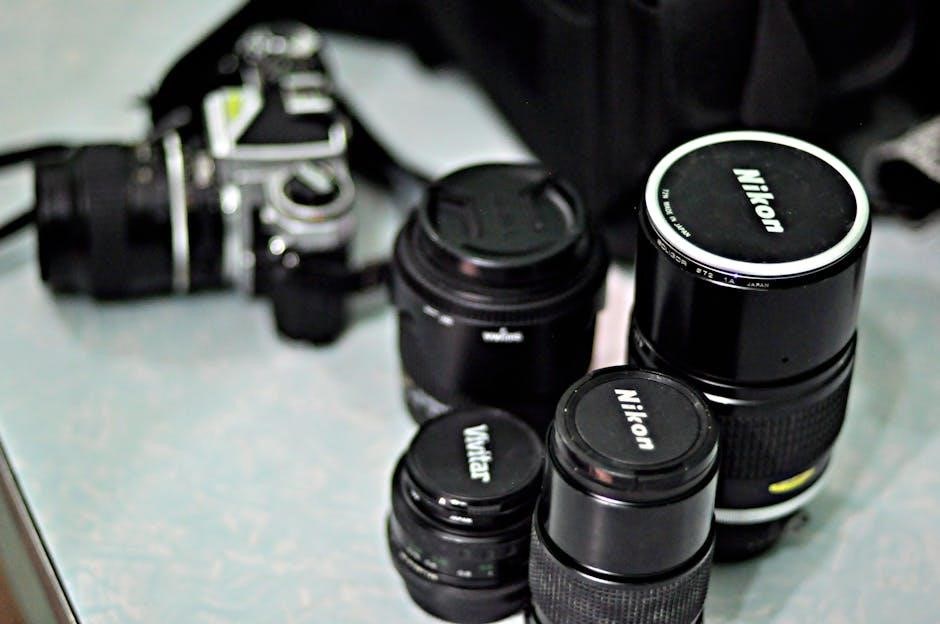
Welcome to the Nikon D60 manual, your comprehensive guide to mastering this versatile digital SLR camera. This manual provides detailed instructions for optimizing settings, shooting modes, and features to enhance your photography experience.
Thank You for Purchasing the Nikon D60
Thank you for choosing the Nikon D60, a powerful and user-friendly digital SLR camera designed to enhance your photography experience. This manual is crafted to help you unlock the full potential of your D60, providing clear guidance on its features, settings, and modes. Whether you’re a beginner or an advanced photographer, this guide will assist you in capturing stunning images with ease and precision.
Overview of the Nikon D60 Camera
The Nikon D60 is a high-quality digital SLR camera featuring a 10.2-megapixel CMOS sensor, EXPEED image processing, and ISO sensitivity up to 3200. It supports SD and SDHC memory cards, offers a 2.5-inch LCD screen, and is compatible with Nikon F-mount lenses. The D60 includes a built-in flash, optical viewfinder, and advanced autofocus for sharp images. Designed for both beginners and enthusiasts, it balances simplicity with powerful features, making it an excellent choice for capturing life’s moments with precision and creativity.
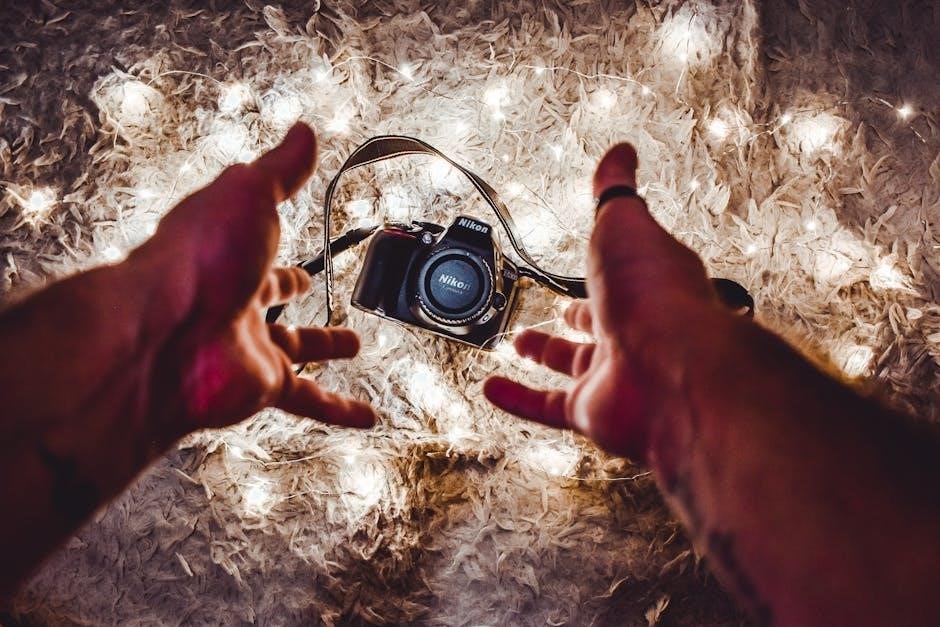
Safety Precautions
Read this manual carefully to ensure safe and proper use of the Nikon D60. Follow all warnings and precautions to prevent damage or injury.
General Warnings and Cautions
Ensure safe operation by following all precautions in this manual. Avoid exposing the Nikon D60 to extreme temperatures, moisture, or physical stress. Never attempt repairs yourself, as this may cause damage or injury. Use only Nikon-approved accessories to maintain performance and safety. Keep the camera out of reach of children and handle batteries and electrical components with care. Always follow proper handling and storage guidelines to prevent malfunction or harm.
Handling and Maintenance Precautions
Handle the Nikon D60 with care to ensure longevity. Clean the camera and lens regularly using soft, dry cloths to prevent dust buildup. Avoid touching the sensor or mirror to maintain image quality. Use a protective case when not in use and store the camera in a dry, cool environment. Regularly update firmware and avoid exposure to harsh chemicals or extreme conditions to preserve performance and functionality.
Environmental and Disposal Information
Dispose of your Nikon D60 responsibly to protect the environment. Recycle batteries, packaging, and electronic components according to local regulations. Avoid improper disposal, as hazardous materials can harm ecosystems. Nikon supports eco-friendly practices, ensuring compliance with global environmental standards. Properly recycle your camera to promote sustainability and reduce waste.
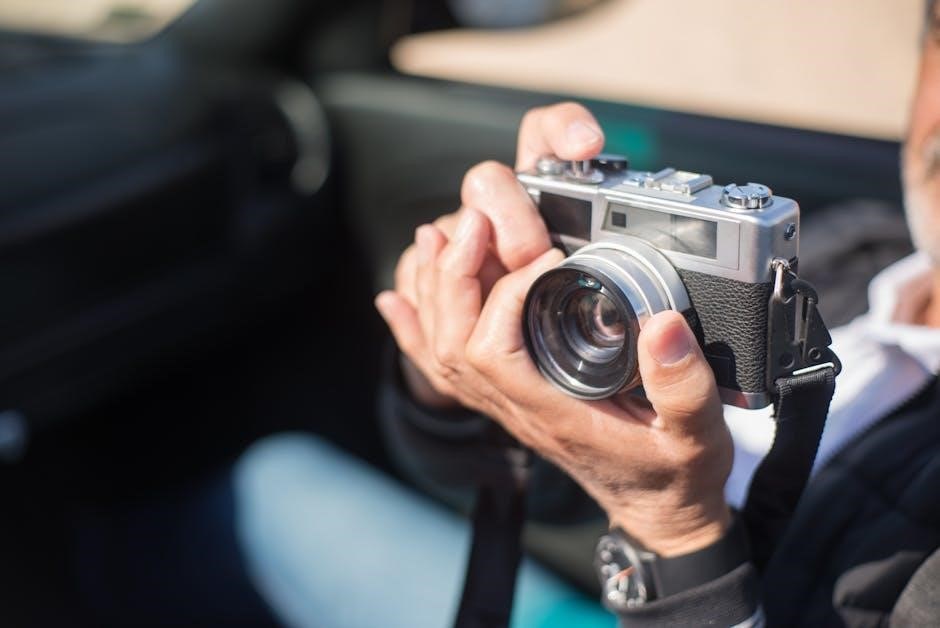
Key Features of the Nikon D60
The Nikon D60 offers a 10.2MP CCD sensor, EXPEED image processing, and 3fps continuous shooting. It features a 2.5-inch LCD, 18-55mm kit lens compatibility, and advanced shooting modes.
Overview of Camera Specifications
The Nikon D60 features a 10.2-megapixel CCD sensor, capturing high-quality images with excellent detail. It supports ISO sensitivity from 100 to 3200, ensuring optimal performance in various lighting conditions. The camera includes a 2.5-inch LCD monitor for image preview and playback, along with a built-in flash and compatibility with Nikon’s F-mount lenses. Its compact design and intuitive controls make it user-friendly for photographers of all levels.
Technical Details and Capabilities
The Nikon D60 boasts advanced technical features, including continuous shooting at 3 frames per second and a buffer capacity of up to 7 RAW images. It supports NEF (RAW) and JPEG file formats, offering flexibility in post-processing. The camera also features an 11-point autofocus system for precise subject tracking and a built-in pop-up flash with a guide number of 12. These capabilities ensure versatile and high-quality photography options for enthusiasts.
Comparing the D60 to Other Nikon Models
The Nikon D60 stands out among entry-level DSLRs with its 10.2MP sensor and intuitive design. Compared to the D40, it offers enhanced autofocus and larger buffer capacity. While the D80 features higher resolution and weather-sealing, the D60 remains a lighter, more affordable option. Its balance of performance and portability makes it an excellent choice for hobbyists seeking quality without advanced professional features found in higher-end models like the D90.
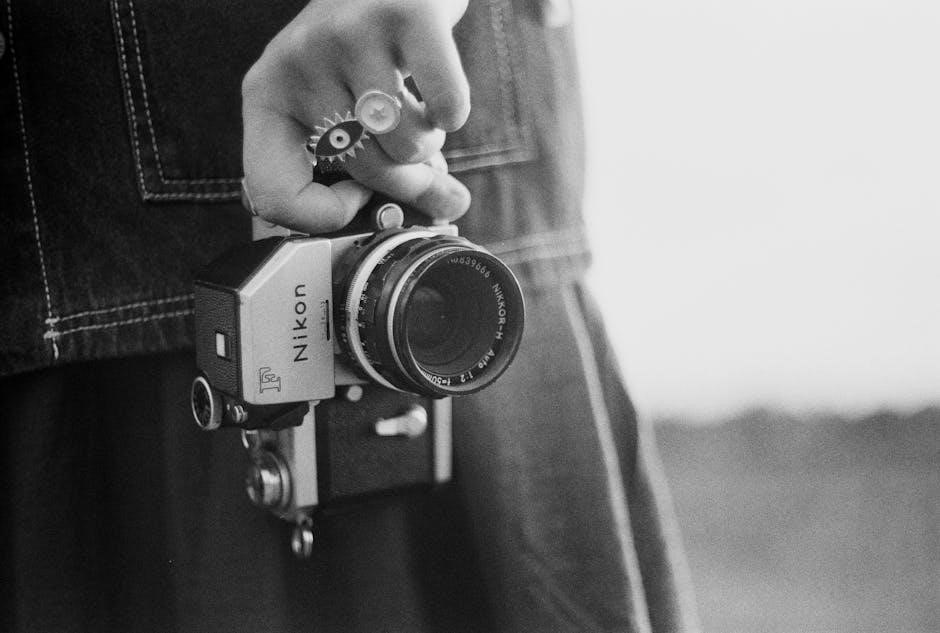
Basic Camera Operation
Mastering the Nikon D60 starts with understanding its core functions. Familiarize yourself with the mode dial, shutter release, and aperture controls to capture stunning images effortlessly and efficiently.
Getting Started with the Nikon D60
Begin by unpacking and charging the battery. Mount a compatible lens, insert a memory card, and power on the camera. Set the language, date, and time. Use the mode dial to select Auto Mode for easy shooting. Familiarize yourself with the camera’s controls and viewfinder. Refer to the manual for detailed setup instructions to ensure optimal performance and functionality.
Understanding the Mode Dial
The mode dial on the Nikon D60 allows you to select shooting modes tailored to different scenarios. Auto Mode offers point-and-shoot simplicity, while Program Mode (P) enables aperture and shutter adjustments. Aperture Priority (A) controls depth of field, Shutter Priority (S) manages motion, and Manual Mode (M) offers full creative control. Each mode provides flexibility for capturing stunning images in various lighting conditions, ensuring optimal results for every shot.
Shooting in Automatic and Manual Modes
Automatic Mode simplifies photography by adjusting settings like aperture and shutter speed for effortless point-and-shoot functionality. Manual Mode offers full control, allowing adjustments to aperture, shutter speed, and ISO for precise results. Auto Mode is ideal for beginners, while Manual Mode suits experienced photographers seeking creative freedom. Both modes ensure high-quality images, catering to different skill levels and shooting preferences.
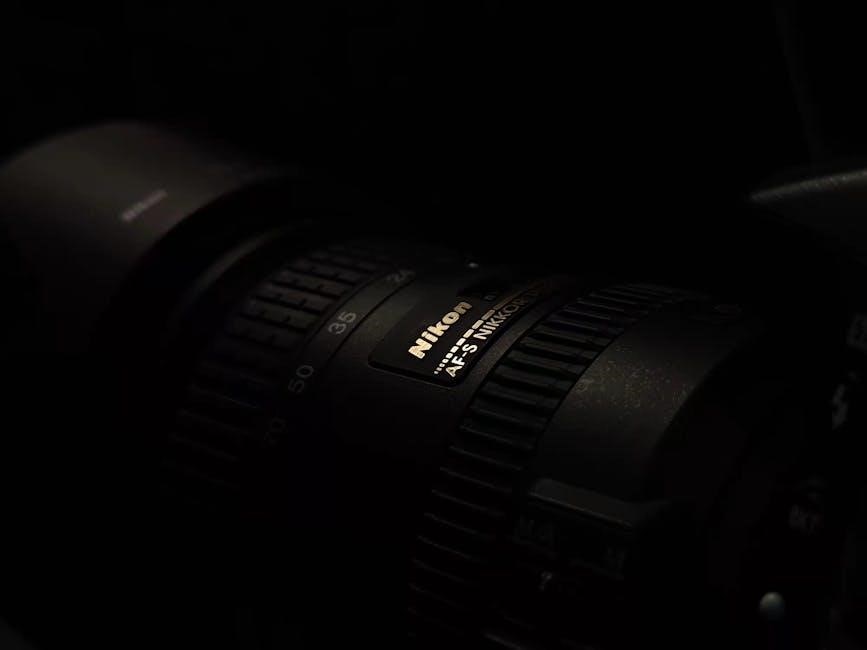
The Setup Menu
The Setup Menu allows you to customize camera settings, such as image quality, white balance, and autofocus options, to suit your photography needs effectively.
Navigating the Setup Menu
The Setup Menu on the Nikon D60 provides access to various customization options. Use the multi-selector to navigate through options like Image Quality, White Balance, and Autofocus settings. Highlight desired options and press OK to adjust. The menu is organized into clear categories, making it easy to locate specific settings quickly. Refer to pages 131 and 133 for detailed guidance on utilizing the Setup Menu effectively for personalized camera configuration.
Customizing Camera Settings
Customize your Nikon D60 settings to suit your photography style. Adjust Image Quality, White Balance, and Autofocus modes via the Setup Menu. Page 132 guides selecting menu items for My Menu, allowing quick access to frequently used settings. Personalize features like auto shooting info and info display format to streamline your workflow. These options ensure your camera is tailored to your creative preferences and shooting needs.
Info Display Format and Options
Customize the info display format on your Nikon D60 to enhance your shooting experience. Access the Setup Menu to adjust settings like shooting info, histograms, and grid displays. Page 133 provides detailed options for tailoring the info display to your preferences, ensuring you have the data you need at a glance. This feature allows you to streamline your workflow and focus on capturing stunning images.
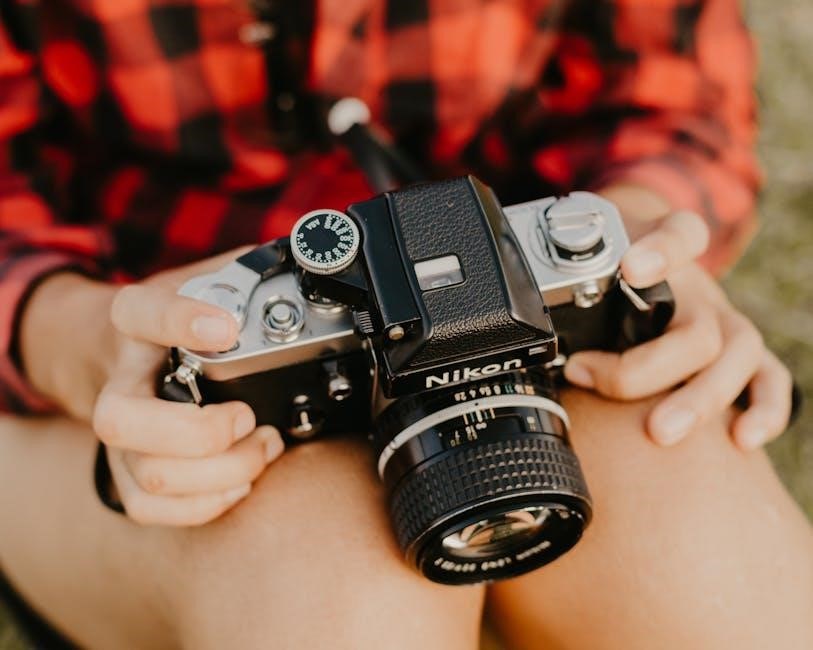
Lenses and Accessories
Explore the wide range of lenses and accessories designed for the Nikon D60, enhancing its functionality and your creative possibilities. Discover compatible options to elevate your photography.
Compatible Lenses for the Nikon D60
The Nikon D60 supports a variety of F-mount lenses, including AF-S, AF, and AI lenses. Popular options include the kit lens, wide-angle, telephoto, and macro lenses. Ensure compatibility by checking the lens specifications in the Nikon D60 manual or manufacturer’s website for optimal performance and functionality.
Choosing the Right Lens for Your Needs
Selecting the right lens for your Nikon D60 depends on your photography style and goals. For portraits, a prime or telephoto lens is ideal, while landscapes benefit from wide-angle lenses. Macro lenses are perfect for close-ups, and zoom lenses offer versatility for everyday shooting. Consider factors like aperture, focal length, and image stabilization to make the best choice for capturing stunning images.
Overview of Nikon Accessories
Nikon offers a wide range of accessories to enhance your D60 experience. These include tripods, memory cards, camera bags, and cleaning kits. Remote shutter releases and external flashes are also available for advanced control. Additionally, the Nikon Manual Viewer 2 app provides digital access to guides, while Nikon’s official website offers detailed resources for exploring compatible accessories tailored to your photography needs.
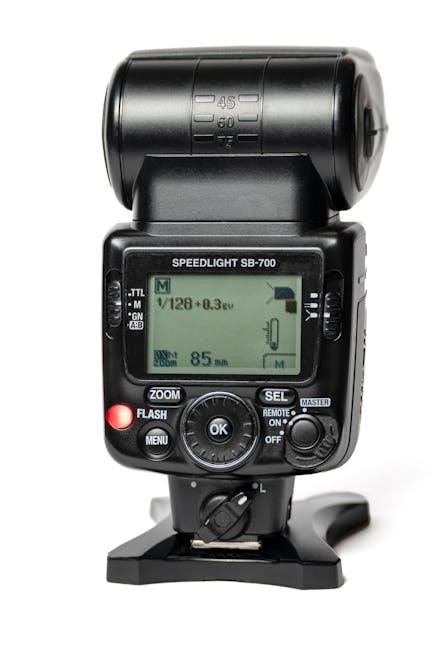
Viewing and Managing Photos
The Nikon D60 allows easy playback and management of photos. Use the Play button to review images, delete unwanted photos, and protect favorites for safekeeping.
Playback and Reviewing Images
Review your photos using the Nikon D60’s LCD monitor. Press the Playback button to view images, zoom in for details, and scroll through your shots. Use the multi-selector to navigate and delete unwanted photos. Protect your favorites to prevent accidental deletion. The camera also offers options to view shooting information and histograms for better image analysis and adjustment.
Deleting and Protecting Photos
Delete unwanted photos on the Nikon D60 by selecting them in playback mode and pressing the Delete button. You can also delete multiple images at once for efficient photo management. To protect important shots, use the Protect feature, which prevents accidental deletion. This ensures your favorite photos remain safe while allowing you to organize and manage your memory card effectively.
Organizing Photos on the Camera
Organize your photos on the Nikon D60 by utilizing the camera’s folder system. Use the Setup Menu to create and manage folders, ensuring your images are neatly categorized. You can also rename files using the camera’s naming conventions for easier identification. This feature helps in maintaining a structured library, making it simple to locate specific photos and streamline your workflow during shoots or reviews.
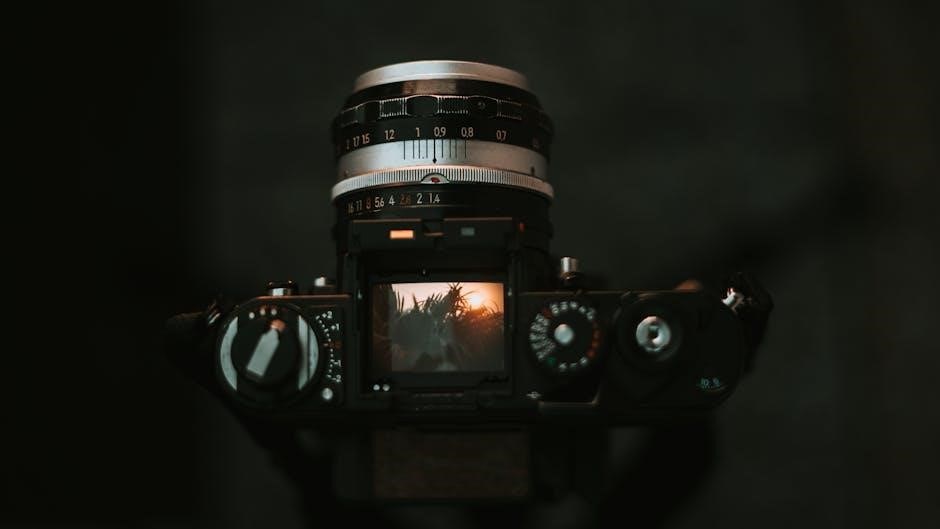
Advanced Shooting Techniques
Master advanced techniques like using the built-in flash, adjusting autofocus modes, and customizing white balance for enhanced control over your photography with the Nikon D60.
Using the Built-In Flash
The Nikon D60’s built-in flash automatically activates in low-light conditions, enhancing image brightness. It features modes like Auto, Manual, and Red-Eye Reduction. Adjust flash compensation via the camera menu or control buttons for customized lighting. The flash range covers subjects within a moderate distance, ideal for portraits and indoor shots. Experiment with settings and external accessories for improved results and consider syncing with external flashes for advanced setups.
Understanding Autofocus Modes
The Nikon D60 offers three autofocus modes: AF-A (Auto-Servo AF), AF-S (Single-Servo AF), and AF-C (Continuous-Servo AF). AF-A automatically selects between AF-S and AF-C based on subject movement. AF-S is ideal for stationary subjects, focusing once and locking. AF-C continuously adjusts focus for moving subjects. Use the mode best suited to your scene for sharp, precise images. Experiment with these modes to capture dynamic moments effectively.
Customizing White Balance Settings
The Nikon D60 allows you to customize white balance settings to match lighting conditions. Choose from Auto, Daylight, Tungsten, Fluorescent, Cloudy, and Shade options. For precise control, use the Preset Manual option by capturing a reference white object. Access these settings via the Shooting Menu. Adjusting white balance ensures accurate color rendition in various environments, enhancing the quality of your images. Experiment with different modes to achieve the desired visual effect in your photography.

Troubleshooting
Troubleshooting your Nikon D60 involves identifying and resolving common issues such as error messages and camera malfunctions. Regular maintenance and updating firmware can prevent many problems.
Common Issues and Solutions
Common issues with the Nikon D60 include error messages, camera freezing, or memory card errors. Solutions involve checking firmware updates, cleaning the memory card contacts, or formatting the card. Resetting the camera to default settings can also resolve unexpected behavior. Regularly cleaning the sensor and lens ensures optimal performance. For persistent issues, refer to the troubleshooting guide or contact Nikon support for assistance.
Understanding Error Messages
The Nikon D60 displays error messages to alert you of specific issues, such as “Err” for system errors or “CARD” for memory card problems. These messages guide troubleshooting. For example, ” apo” indicates an aperture issue, while “CH” signals a faulty battery. Refer to the manual for detailed explanations of each error code. Addressing these issues promptly ensures optimal camera performance and prevents potential damage. Always consult the manual or Nikon support for clarification.
Cleaning and Maintaining the Camera
Regular cleaning and maintenance ensure the Nikon D60 operates at its best. Use a soft, dry cloth to wipe the camera body and lens. For stubborn smudges, dampen the cloth slightly but avoid harsh chemicals. Clean the sensor using a blower or brush designed for cameras. Avoid touching the mirror or internal components. Store the camera in a cool, dry place and update firmware periodically for optimal performance; Always use Nikon-approved cleaning tools and accessories;

Additional Resources
For more information, visit the official Nikon website or download the Manual Viewer app. Contact Nikon support for assistance or explore online forums for user discussions and tips.
Downloading the Nikon D60 Manual
The Nikon D60 manual can be easily downloaded from the official Nikon website or through the Manual Viewer 2 app. This app is available for iPhones, iPads, and Android devices. The manual provides detailed instructions for camera settings, shooting modes, and maintenance. It also includes troubleshooting tips and information on compatible lenses and accessories. Downloading ensures you have a convenient digital copy for quick reference anytime, anywhere.
Nikon Customer Support and Contact Information
For assistance with your Nikon D60, visit the official Nikon website to access customer support. You can find contact details, troubleshooting guides, and software downloads. The support team is available to address queries regarding camera functionality, lens compatibility, and maintenance. Additionally, the Manual Viewer 2 app provides digital access to your camera’s manual, ensuring you have all the resources needed to optimize your photography experience.
Online Communities and Forums
Engage with photography enthusiasts and experts in online forums dedicated to Nikon cameras. These platforms offer tips, troubleshooting advice, and creative insights for the D60. Share your experiences, learn new techniques, and stay updated on the latest Nikon products and software through active discussions and user-generated content. Joining these communities can enhance your photography journey and help you make the most of your Nikon D60.